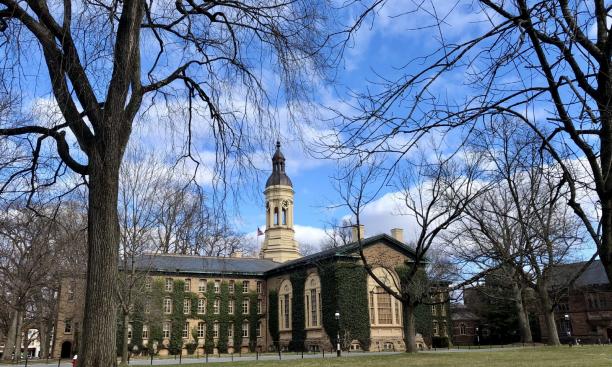
The University endowment had a 5.6 percent return in the fiscal year 2020 that ended June 30 — down from the average result in recent years, but shielding Princeton from the damage and cuts COVID-19 inflicted on many universities.
The endowment increased to $26.2 billion. In the previous year, Princeton’s endowment returned 6.2 percent. The average annual return over the past decade has been 10.6 percent.
Facing the financial uncertainties created by the ongoing COVID-19 pandemic was a challenge, said Andrew Golden, president of the Princeton University Investment Co. (Princo). It was the first time investors have “experienced a moment of financial stress that was caused by something outside of the financial system,” Golden said in an interview with PAW, “which makes it particularly challenging because the underlying issue, this pandemic, is pretty hard to predict.”
As a result, the University saw both positive and negative returns within its portfolio of investments, Golden said. In global developed markets, Princo investments finished the year with a 25 percent gain. He added that the University outperformed in emerging markets, but some areas, such as real estate, experienced uncertainty. Additionally, the University’s “independent returns,” such as hedge funds, broke even.
According to University spokesman Michael Hotchkiss, the endowment paid for 61 percent of the University’s operating-budget expenses in the 2019–20 academic year. The University’s spending rate — the percentage of the endowment drawn on in a given year — increased to 5.53 percent in 2019–20, Hotchkiss said.
The endowment paid for 61 percent of the University’s operating-budget expenses in 2019–20.
“Princeton has been fortunate to face the many financial challenges created by the COVID-19 pandemic from a strong budgetary position, thanks in part to an endowment that is the result of generations of generosity from alumni and friends, as well as effective stewardship and investment by the trustees and Princo,” Provost Deborah Prentice said in a University statement.
Princeton’s results landed in the middle among Ivy League institutions. Brown University’s endowment performed the best with a return of 12.1 percent.
The unpredictability of COVID will not prompt Princo to change its fundamental strategy. “Our success has always been driven by our focus on the long term ... so I think it would be a mistake to oversteer right now,” Golden said. Achieving reasonable returns in this climate “supports the fairly robust and resilient strategy,” Golden said.
Fiscal year 2021, which includes the fall semester, has seen reductions in revenue from tuition, room, and board due to the pandemic, Hotchkiss told PAW. The budget provides financial aid for 61 percent of Princeton’s undergraduate students.
Eight months into the pandemic, Golden said, there will likely be more stressors and challenging times ahead. So far, Golden said, the University’s investments are experiencing a stronger start in the 2021 fiscal year. “We’re seeing some good things emerge out of our venture-capital portfolio,” he said. “So that’s gratifying.”
Endowment returns sources: Brown.edu; Dartmouth News; Harvard Magazine; Yale News; Office of Communications; Pensions & Investments; Penn Office of Investments; Cornell Chronicle
Endowment Returns for the Ivies
Brown 12.1%
Dartmouth 7.6%
Harvard 7.3%
Yale 6.8%
Princeton 5.6%
Columbia 5.5%
Penn 3.4%
Cornell 1.9%
